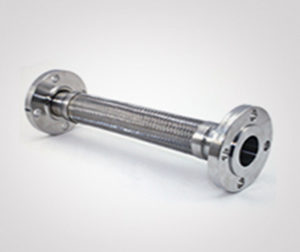
Hoses are used extensively in home and industries. At homes, rubber hoses are generally used in the garden to water the plants. Tubes are even used in vacuum cleaners at home. In industries, hoses have a variety of purposes and applications ranging from automobiles to aviation. Ensure the best results from the reliable chemical hose manufacturers.
Hoses are a crucial component in the manufacture of engines in automobiles and aircraft. For hoses to function correctly, you must clean them regularly. Doing this will have several benefits and prevent the hoses from malfunctioning. Some of them are:
- The chemicals that are used inside the tubes can damage them in the long term. Long term effects of these chemicals can be hazardous, and therefore it is necessary to clean the hoses regularly. If you talk about the tubes that are used at home, garden and vacuum pumps, it is advised that the hoses are cleaned after every use. Hoses used in the industries cannot be cleaned every day, and therefore you should fix a time for their cleaning.
- If you are using the same hose to convey and transfer multiple products, there are chances of contamination. It is therefore suggested that the chemical hoses be adequately cleaned.
- When chemicals are transferred in a hose, some of it might remain in the tube itself. This residue can spill out of the hose and cause physical damage to the surrounding environment. Cleaning of the hose regularly will ensure that there is no unwanted spillage.
How to clean a chemical hose?
The most method of cleaning a chemical hose is by flushing water or other cleaning solution through it. This will clean all the chemicals and impurities. Cleaning procedures for hoses may differ from one industry to another. It depends on the kind of use the hoses are being put to. Here are a few recommendations that will come handy for those who are involved in the cleaning of hoses.
- Chemical hoses involve the use of hazardous chemicals. These chemicals can harm you if you get in touch with them. It is recommended that all staff personnel cleaning the chemical hoses must wear protective gear to protect themselves from the harmful effects of chemicals. You should wear protective glasses, eye masks, gloves, and hats.
- The residue chemicals that are to be cleaned should be readily soluble in the cleaning solution. This will ensure that the residue coming out of the hose isn’t just chemicals. The cleaning solution should also be compatible with the hose lining and fittings.
- The entire combination of material that is being flushed out of the hose should be treated according to the guidelines prescribed by the concerned authorities. If left untreated, this material can harm those living in the area due to the chemicals present in it.
- If you are using cleaning devices to clean the hose, you should exercise extreme care. If not inserted properly, these devices can damage the inside of the hoses.
- Sometimes, steam is also used to clean hoses. It is not possible for a common man to do this by himself. Steam cleaningis not recommended commonly. This is because it requires proper operating temperatures and pressures. If not done correctly, it can even lead to the bursting of the hose. You can contact professional hose cleaners to do this job for you. They have all the required equipment needed to clean the hoses.
- Once the tubes are cleaned, you need to ensure that no chemical residue remains behind. For this, you can hang the tubes upside down for a few hours so that all the remaining residue drains off. This method is especially recommended to clean convoluted hoses.
- If it is not possible to hang the hoses after cleaning, you can also run hot air through them for drying.
The cleaning procedures can be divided into separate categories.
- Cleaning: This involves the complete cleaning of the system so that no dirt remains.
- Sanitization: Apart from cleaning, this procedure also involves the removal of germs and other health-related organisms.
- Disinfection: This is mostly done once the hose and equipment are adequately cleaned. It involved the destruction of all the vegetative cells that can give rise to more harmful bacteria.
- Sterilization: This is the last step in cleaning. It involves the removal of all living organisms from the hoses.
Hoses can be cleaned both by hand and by machines. When cleaned manually, personnel use buckets filled with water or cleaning solution. Machines use tank filled with water to clean the hoses. Get the most out of the reliable chemical hose manufacturers.
No matter what cleaning equipment or procedure you are using, you should ensure that you are doing it the right way. For more help on cleaning chemical hoses, you can contact us. We provide professional hose cleaning services at the most affordable prices.


Leave a Reply